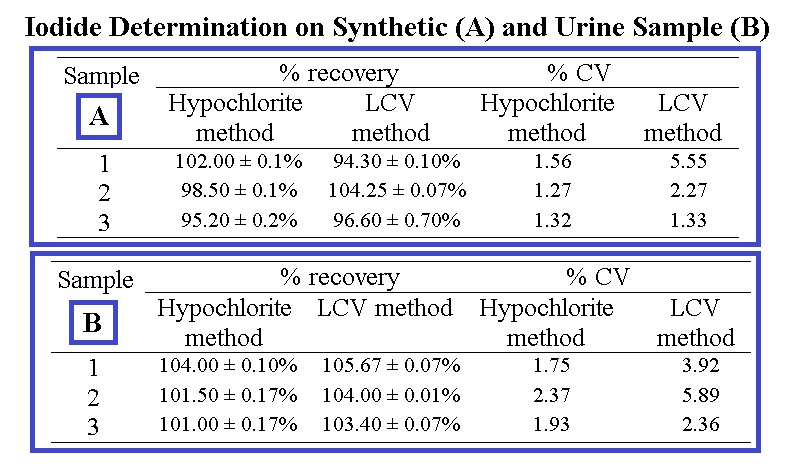Development of Spectrophotometry Method For Iodide Determination Based on I2-Starch Complex Formation with Hypochlorite as oxidator
Abstract

References
Zhang, W., Mnatsakanov, A., Hower, R., Cantor, H., and Wang, Y. Front. Biosci, 2005, 10, 88-93. Fasli, D., Sumali, A., Gizi dan Kualitas Hidup. 1998, UPI, Jakarta. Departemen Kesehatan RI, Strategi imobilisasi sosial dalam rangka meningkatkan Konsumsi Garam Beryodium di Masyarakat, 1997, Dirjen PKM Depkes RI, Jakarta. Stanbury, J., Pichera, A., Measurement of Iodine Deficiency Disorders, 1996, Oxford University Press, New Delhi. Zimmermann, M.B., Jooste, PL., Pandav, CS., Endocr. Rev., 2009, 30 (4), 376-408. Cavalieri R.R., Iodine Metabolism and Thyroid, 1997, Year Book Medical Publisher, Chicago. ICCIDD/UNICEF/WHO, Assessment of Iodine Deficiency Disorders and Monitoring of Their Elimination: a guide for program managers, Second edition, 2001, Department of Nutrition for Health and Development World Health Organization, Switzerland. Laurberg, P, Cerqueira, C, Ovesen, L, Rasmussen, LB, Perrild, H, Andersen, S, Pedersen, I & Carlé, A., Best Pract. Res. Clin. Endocrinol. Metab., 2010, 24, 1, 13-27. (DOI: 10.1016/j.beem.2009.08.013) Jooste, Pieter L., and Emmerentia Strydom., Best Pract. Res. Clin. Endocrinol. Metab., 2010, 24, 77-88. Basset, J., Denney, G., Jeffery, H., Mendham, J., Vogel’s Textbook of Macro and Semimicro Qualitative Inorganic Analysis, Fifth Edition, 1978, Longman Scienfic and Technical, London. American Public Health Association, APHA, Standard Methods for the Examination of Water and Wastewater, 18th, 1999, Washington. Cripss, R., Venuat, L., Bruchertseifer, L., J. Radioanal. Nucl. Chem., 2003, 256 (2), 357–360.
Refbacks
- There are currently no refbacks.









